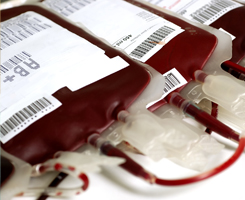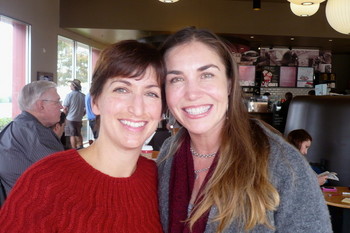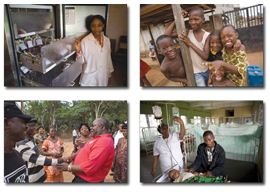
A Letter to Blood Donors
I am an active 43 year old woman with a strong love for life. I am living with terminal breast cancer and acute leukemia (AML). As a result, I am transfusion dependent and now receive blood and platelets on a weekly basis.

I am an active 43 year old woman with a strong love for life. I am living with terminal breast cancer and acute leukemia (AML). As a result, I am transfusion dependent and now receive blood and platelets on a weekly basis.

By Billie Rubin, Hemoglobin's Catabolic Cousin, reporting from the labs of Stanford Blood Center
A unit of blood does so much for patients in need. The gift of life is donated, tested, processed and sent to hospitals' transfusion service departments where more important work is done to ensure it is compatible with the recipient.

By Bonnie Westman with the Los Gatos Patch.
Since 2006, Linda Swenberg and Michelle Abene donate platelets at Stanford Blood Center, in addition to significant volunteer work in the community.

By Melissa Ramos, volunteer guest-blogger for Stanford Blood Center
John Paul Mayor is one of our very regular platelet donors. For our #WhyIGiveBlood campaign, we picked his brain about what inspired him to become a regular donor.
By Amanda Baker, Communications Intern, Stanford Blood Center
Think globally, act locally
help globally? At Stanford Blood Center, each of these are possible because now your blood donation that will save a life in your community can also help save lives overseas. Our online store recently added an option of donating the points you receive for giving blood towards helping blood centers in Nigeria, as part of the Safe Blood Africa Project.

In 1989, just six months after marrying my young bride, I was diagnosed with Acute Lymphoblastic Leukemia. My wife and I were thrust into the world of cancer, and we watched our hopes and dreams shatter in an instant. At twenty-six years of age, I was told by doctors at the City of Hope National Medical Center that my prognosis was "poor." But after nearly a year and a half of intensive chemotherapy, brain radiation, bone marrow biopsies and countless other procedures, I emerged on the other side of my disease, in remission and thankful for the blessing of each new day.
By John Williams, Marketing Manager, Stanford Blood Center
Living in the Bay Area has many advantages, not least of which is the plethora of opportunities to spend leisure time. With so many competing activities available, it's easy to miss some gems. For instance, the Palo Alto Adult School (PAAS), a provider of courses for both self-enrichment and job-training. Of course, Stanford Blood Center (SBC) is not a bad place to devote a little time either, especially if you're interested in helping patients. But people need to know about these organizations in order to take advantage of them.

At a blood donor recognition event last year, Janet Silberman, a 150-time donor, sat in the audience and listened to Larry Frederick, a retired police officer, thank each and every individual in the room for saving his life. Many years earlier, he experienced a life-threatening event that required immediate blood transfusions. His story could have been terribly tragic. But instead, the blood was available and it saved his life. He now rides his bicycle across the country setting up blood drives and personally thanking the donors.

By Amanda Baker, Communications Intern, Stanford Blood Center
This summer, BloodSource staff and representatives from the Carmel Valley Rotary Club traveled to Nigeria to continue working on the Safe Blood Africa Project. Led by Dr. Chris Gresens of BloodSource, the team also included Northern California Community Blood Bank CEO Tom Schallert and BloodSource's Dr. John Watson-Williams, as well as project founder and Rotarian Warren Kaufman. Their destination was Uyo University Teaching Hospital in the state of Akwa Ibom, a region of about four million people in the southern part of the country.

By Melissa Ramos, volunteer guest-blogger for Stanford Blood Center
Staying healthy through this season can be especially challenging. It seems that all around you, people have the sniffles or a cough. Taking good care of yourself is key to preventing the flu. Here are a few tips to help keep yourself strong and healthy this year.